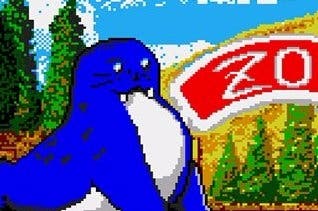What have walruses and video games got in common?
Marks out of tenuous.
In deepest, darkest south-east London, there lies a strange and almost forgotten monument to times past. Walk north from Forest Hill station and you will see its crumbling facade. Enter the dingy interior, breathe in the stale air, and marvel at the mysterious collection of ancient relics. Gaze in wonder at these eccentric remnants of history; these dusty, dying survivors of a world long gone.
Or, just walk straight past the Wetherspoons and head to the Horniman Museum. It was founded in 1901 by Frederick John Horniman, a tea merchant and philanthropist. (His birth name was Smith, but he changed it as a gift to future generations of schoolchildren.)
Horniman collected some 30,000 artefacts over the course of his travels, including stuffed animal specimens, tribal masks, musical instruments, works of art, and fridge magnet bottle openers. He built the museum to store his collection, after his wife pointed out that there wasn't enough Kallax shelving in every Ikea nationwide to store 30,000 dead marmosets and sitars.

The museum's most impressive attraction is the stuffed walrus. He sits proudly atop a fibreglass iceberg in the main hall, towering over the surrounding cases of primates and reptiles. At 130 years old, he is looking a bit patchy here and there, but he still sports a gleaming set of tusks. (These were almost stolen during the 2011 Lewisham riots, but looters were lured away by a tweet about the huge stash of foot spas in Catford Lidl.)
The best thing about the walrus is that he is hugely fat. This is because like most Victorians, the taxidermist who stuffed him had never seen a walrus. He didn't know they have wrinkles, and so he just kept stuffing and stuffing, until he created this gigantic inflated beast who looks like he would take off if he weren't glued to his iceberg.
What has all this got to do with video games, I hear my employer ask? Well, IT'S A METAPHOR, innit. The walrus represents the bloated carcass of a modern triple-A franchise, stuffed to bursting with unnecessary add-ons, never allowed to rest in peace but condemned to spend eternity in perpetual dead-eyed stasis. Oh hi Assassin's Creed, didn't see you there.
Actually, my point is that this object wouldn't be half as interesting, or at all hilarious, if the taxidermist had been worried about accurately recreating the walrus's form. By following his own instincts, instead of bothering to ask someone who'd actually seen a walrus, or doing a Google image search, he produced something wonderful.
There's too much emphasis on realism in your modern video games. Of course there's a place for these elements, and a demand, as demonstrated by the popularity of Forza and the like. We all enjoy a game with the kind of graphics that make your mum go, "Ooh, they really do look like films now, don't they?", until she sees someone speak in a cut-scene. But the quest for ever-more detailed visuals and accurate physics has meant less scope for fun, creativity, and happy accidents. For evidence of this, let us compare two video games that feature walruses. 1988's New Zealand Story is the tale of a kiwi chick on a mission to rescue his friends, who have been kidnapped by evil Wally the Walrus. His character model appears to have been drawn from the Horniman walrus. You get to fight him in the final boss battle, where he chucks Pringles at you while floating up and down on a hot air balloon. I'm no marine biologist, but don't think they often do this in the wild.
Now compare the 2015 Steam Greenlight project Walrus Simulator. In the developer's own words: "Walrus simulator is realy "realistic" Warus game. In Walrus simulator you can venture, jump over ocean and much much more! We are make this game long time (1 hour)."

Obviously there is much to appreciate here, from the fresh, contemporary soundtrack to the inspired decision to give the walrus a gun. But really, which game would you rather play? The fun, silly one, all blue skies and hot air balloons? Or the simulation, with its breathtaking attempt at wave physics, and a protagonist who looks like a cat that's been through the NBA 2K15 facial scanner?
Having said that, Walrus Simulator also embodies a positive new development. It's easier than ever for anyone to create a game, and to share their efforts with the world, without worrying about economic pressures, programming skills, or whether the subject matter is too niche. In fact, head over to the Scratch website, and you'll find 19 games about walruses.
They are all terrible. But finding that out makes for a hilarious way to pass the time, especially when you are on a deadline and still haven't had an idea for your column beyond "something about the big fat walrus up the road from Wetherspoons." (My favourite, ironically, is Walrus Simulator 2015. Bold narrative, strong visuals, realistic physics. 7/10.)
And one of these days, someone who's mucking about making a daft walrus game might just make a great one - because as any Victorian taxidermist will agree, you don't need to know what you're doing to create something brilliant.
TLDR: Don't bother doing any research, video games developers. Just make it up as you go along, and people will still be playing your games in 130 years. You are welcome.

